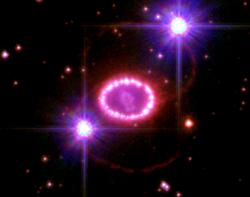 Only 20 years ago, astronomers were treated to one of the most powerful nearby explosions – a sight not seen in 400 years, before the advent of modern telescopes. What we now call Supernova 1987A detonated in the Large Magellenic Cloud providing a wealth of data for astronomers. Okay, it actually detonated 163,000 years ago, but that’s how long it took the light to reach us.
Only 20 years ago, astronomers were treated to one of the most powerful nearby explosions – a sight not seen in 400 years, before the advent of modern telescopes. What we now call Supernova 1987A detonated in the Large Magellenic Cloud providing a wealth of data for astronomers. Okay, it actually detonated 163,000 years ago, but that’s how long it took the light to reach us.
Continue reading “20th Anniversary of the Brightest Supernova in Recent History”
Powerful Solar Winds Colliding Head On
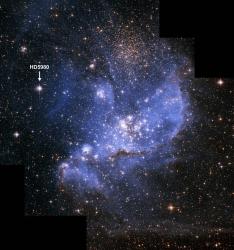 Off to one corner of NGC 346, a star cluster in the Small Magellanic Cloud, there’s an amazing collision between two stars. Well, not the stars themselves, but the powerful winds they’re ejecting.
Off to one corner of NGC 346, a star cluster in the Small Magellanic Cloud, there’s an amazing collision between two stars. Well, not the stars themselves, but the powerful winds they’re ejecting.
Continue reading “Powerful Solar Winds Colliding Head On”
New Survey of the Gamma Ray Skies
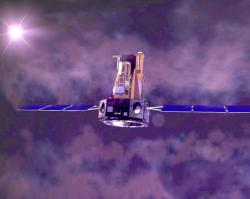 ESA’s Integral spacecraft has released a new survey of the sky, seen in gamma rays – the most energetic radiation we know of. This latest survey brings the total sky coverage to 70%.
ESA’s Integral spacecraft has released a new survey of the sky, seen in gamma rays – the most energetic radiation we know of. This latest survey brings the total sky coverage to 70%.
Continue reading “New Survey of the Gamma Ray Skies”
Chandra Gives Another Look at the Pillars of Creation
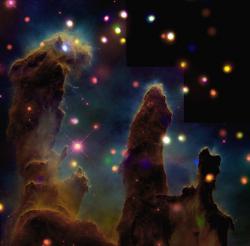 Probably the most famous photograph every taken by the Hubble Space Telescope is of the “Pillars of Creation”; a star forming region inside the Eagle Nebula (aka M16). Astronomers have wanted to know just how much star formation is actually going on inside the nebula.
Probably the most famous photograph every taken by the Hubble Space Telescope is of the “Pillars of Creation”; a star forming region inside the Eagle Nebula (aka M16). Astronomers have wanted to know just how much star formation is actually going on inside the nebula.
Continue reading “Chandra Gives Another Look at the Pillars of Creation”
Hubble View of Planetary Nebula NGC 2440
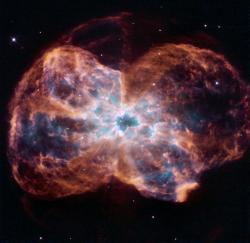 This beautiful photograph was captured by the Hubble Space Telescope’s Wide Field Planetary Camera 2, and it shows the planetary nebula NGC 2440. Once again, we’re looking at a haunting vision of the future that awaits our own Sun.
This beautiful photograph was captured by the Hubble Space Telescope’s Wide Field Planetary Camera 2, and it shows the planetary nebula NGC 2440. Once again, we’re looking at a haunting vision of the future that awaits our own Sun.
Continue reading “Hubble View of Planetary Nebula NGC 2440”
Comets Colliding Inside the Helix Nebula
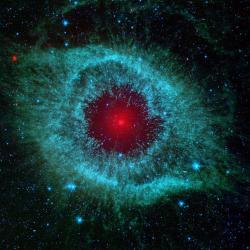 The latest photograph taken by the Spitzer Space Telescope shows a bizarre false colour view of the Helix Nebula. Located around 700 light years from Earth, in the constellation of Aquarius, this beautiful nebula used to be a star similar to our own Sun. As it died, it sloughed off its outer layers, creating the view we see today.
The latest photograph taken by the Spitzer Space Telescope shows a bizarre false colour view of the Helix Nebula. Located around 700 light years from Earth, in the constellation of Aquarius, this beautiful nebula used to be a star similar to our own Sun. As it died, it sloughed off its outer layers, creating the view we see today.
Continue reading “Comets Colliding Inside the Helix Nebula”
Distant Quasars Surrounded by Dark Matter Halos
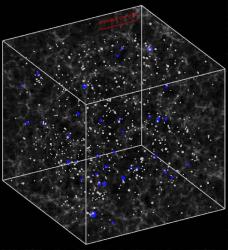 Astronomers have taken 4,000 of the brightest quasars and figured out just how much dark matter surrounds them. As we’re starting to learn, wherever there’s matter, there’s 10x as much dark matter. These quasars back that theory up.
Astronomers have taken 4,000 of the brightest quasars and figured out just how much dark matter surrounds them. As we’re starting to learn, wherever there’s matter, there’s 10x as much dark matter. These quasars back that theory up.
Continue reading “Distant Quasars Surrounded by Dark Matter Halos”
Distant Cluster of Galaxies Viewed by Hubble
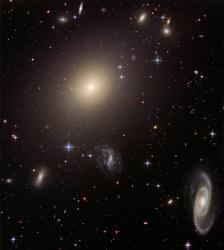 This beautiful picture is of a distant collection of galaxies called the Abell S0740 galaxy cluster, captured by the Hubble Space Telescope. It’s located more than 450 million light years away in the constellation Centaurus.
This beautiful picture is of a distant collection of galaxies called the Abell S0740 galaxy cluster, captured by the Hubble Space Telescope. It’s located more than 450 million light years away in the constellation Centaurus.
Continue reading “Distant Cluster of Galaxies Viewed by Hubble”
What’s Up this Week: January 29 – February 4, 2007
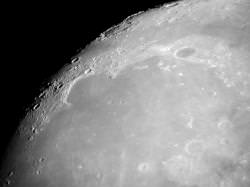 Monday, January 29 – Tonight we will return again to the lunar surface to have a look through binoculars or telescopes at another tremendous impact region.
Monday, January 29 – Tonight we will return again to the lunar surface to have a look through binoculars or telescopes at another tremendous impact region.
Continue reading “What’s Up this Week: January 29 – February 4, 2007”
First Images of the Sun from STEREO
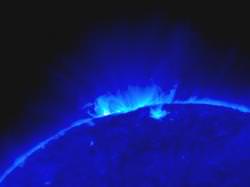 Remember the recent launch of the STEREO spacecraft? These are two identical solar observing spacecraft which will give astronomers a thrilling 3-D view of the Sun. Officially, they’re the Solar TerrEstrial RElations Observatories (STEREO… get it?), and they were lofted into orbit on October 25.
Remember the recent launch of the STEREO spacecraft? These are two identical solar observing spacecraft which will give astronomers a thrilling 3-D view of the Sun. Officially, they’re the Solar TerrEstrial RElations Observatories (STEREO… get it?), and they were lofted into orbit on October 25.
Continue reading “First Images of the Sun from STEREO”
